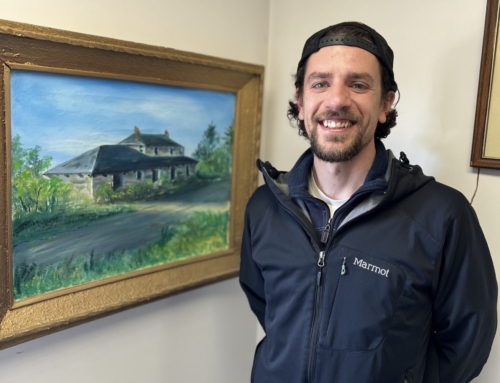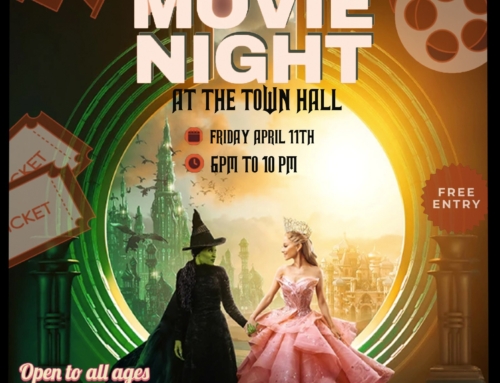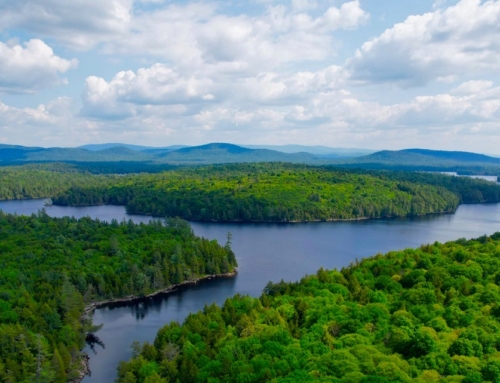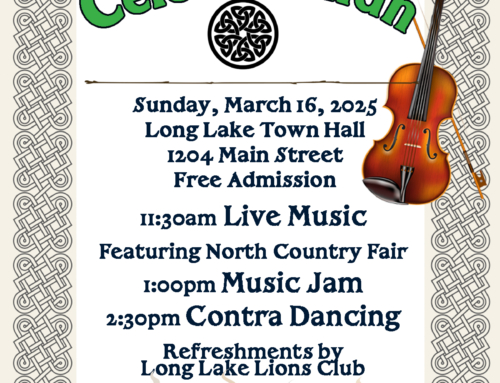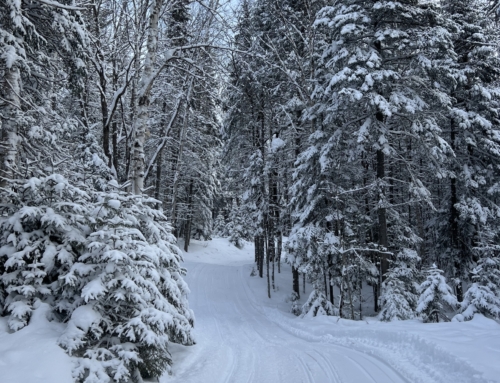Written by: Hallie Bond, Town of Long Lake Historian
A fixture of small Adirondack towns like Long Lake is a heavy-duty hanging scale rigged to a high point in a public place. Ours is at the Adirondack Hotel. On any evening this past month you may have seen a tired hunter hoisting a whitetail buck up to weigh it, hoping it is really as heavy as it seemed as he was dragging it out.
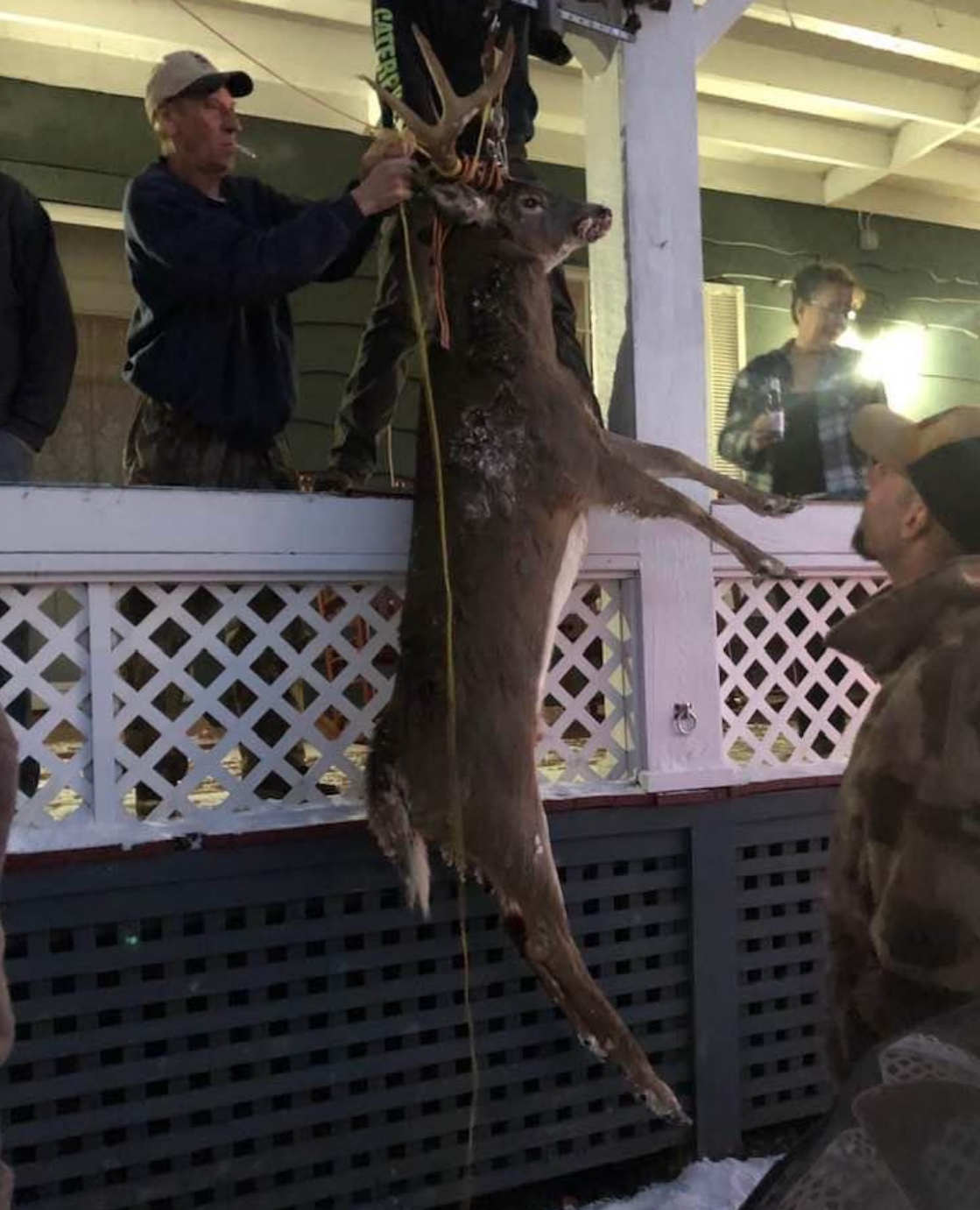
Caption 1: Jon Scofield’s buck is weighed at the Adirondack Hotel November 2022. Photo courtesy of Branden Tokarz.
Deer hunting is one of the most enduring traditions in Long Lake. It goes back millennia. Iroquois and Abenaki cultures were based on deer in the centuries before Europeans contacted them and began demanding beaver fur instead, for kettles, beads, and other goods from the “civilized” world. After the American Revolution, white men followed Indian trails into the region and hunted for the markets growing up in the lowlands. And then the “city men” (and some women) started coming to hunt for sport. They hunted with dogs, boats, and lights, and often hired local men, who knew the woods well from their own hunting, as guides. Hounding and jacking were outlawed in the 1890s, but the traditions of hunting to feed the family and hunting for sport have endured.
“Quite an Inducement”
“You may ask why a man should move into such a place with a family?” wrote Livonia Stanton Emerson of Long Lake in the 1840s. “The only reason I know was this: land was cheap, wood was plenty, all it cost was to cut it, fish and venison and fur were plenty. This was quite an inducement for a poor man.” That venison—sometimes plentiful, sometimes not—has continued to be an inducement to Long Lakers ever since.
In Livonia’s day, Long Lakers hunted for themselves mostly in the autumn, when the meat would keep outdoors in the cold weather. In the late nineteenth century, the state began to manage the deer population through hunting regulations, and in 1880 established the office of game protector. These men were charged with enforcing management laws such as bag limits, limits to the season, limits on antlerless deer, and what sorts of weapons were allowed when. The game protectors were local folks, and their relationship with their neighbors over hunting was sometimes ambiguous. Stories are told of one who received a haunch of venison out of season with the note that more would come if he didn’t investigate too closely. It is said that Long Lake game protectors did not prosecute poor families much in the Depression, when those folks were struggling.
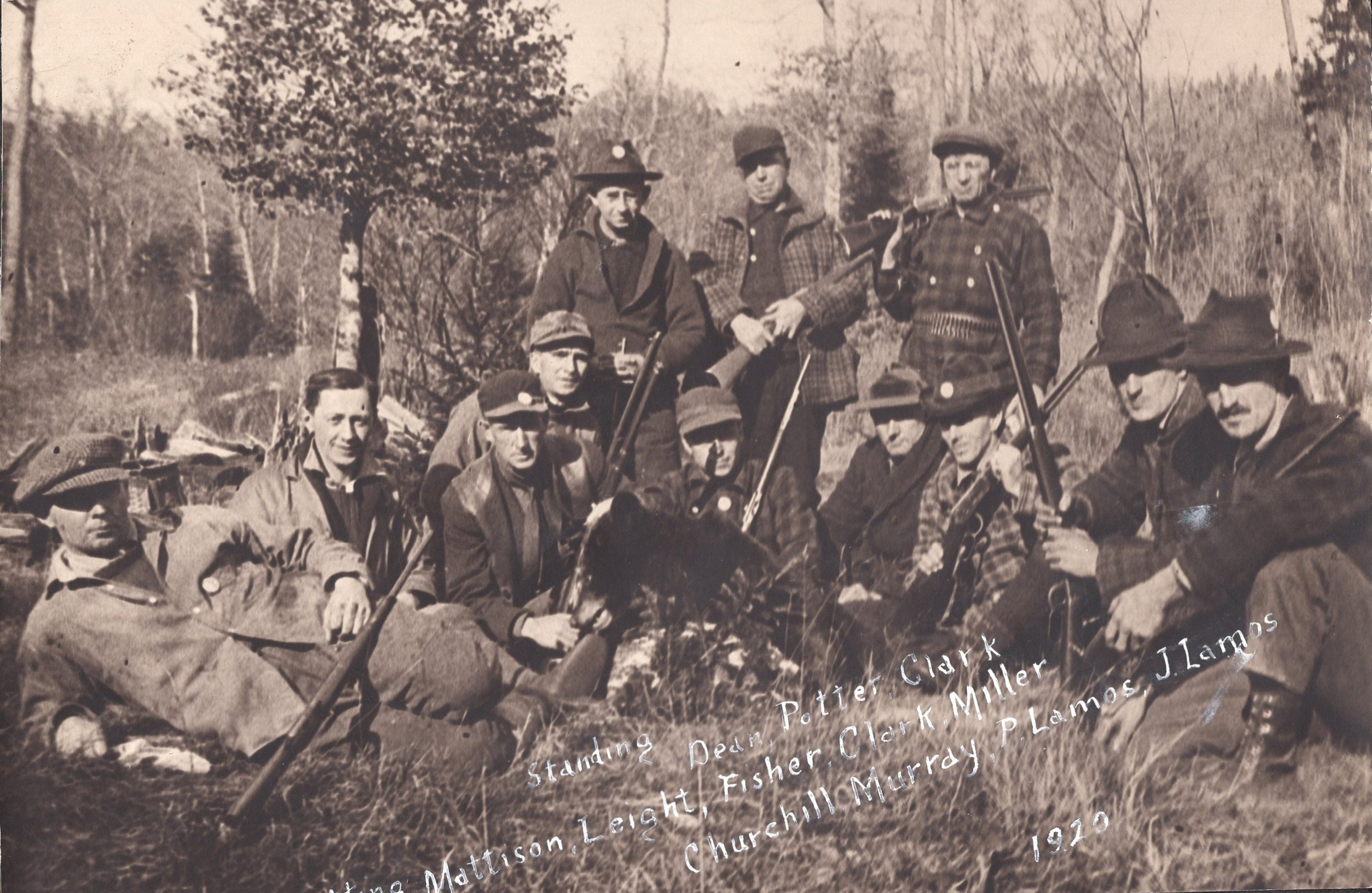
Caption 2: Local hunters turned their knowledge of the woods and the habits of its denizens to a profit both in guiding and as game protectors. In the photo above, a group with their bear in 1920 pose with their guides, locals Steve Lamos (standing on the left), and his nephews, Perly and Stephen John, seated at right. Photo courtesy of Chris Coffin.
Like so many twentieth century hunting guides, Steve Lamos worked at many different jobs to make ends meet. He lived at different times in Newcomb and Long Lake, working as a carpenter, undertaker (a common job for someone who could also make the coffins), caretaker, and superintendent of a timber tract.
Steve Lamos’s third son, Merritt, used his knowledge of the woods in his career as a game protector in the 1920s and 1930s. It seems to have been his primary job—he patrolled daily, including holidays, checking for violations and killing “vermin,” which in December, 1928, included six red squirrels, five porcupines, and two dogs. Hounding had been outlawed for thirty years by then, and whether the two “vermin” dogs were operating on their own or had been trained to run deer is unknown. Merritt travelled 1198 miles that month by foot, boat, and auto, on Christmas Eve driving to the foot of the lake on the ice. (He worked all the next day, as well.)
In 1971, in response to increased awareness of environmental degradation of all sorts, Game Protectors were renamed Environmental Conservation Officers and given added responsibilities for enforcing regulations regarding environmental threats such as industrial chemical disposal and wetlands protection.
Getting to the Woods
Hunters not lucky enough to live in Long Lake found it easier to pursue the sport in the twentieth century by driving up here for a long weekend or even a week or two. For the first half of the century the roads and cars weren’t as good as they became after World War II and hunting trips weren’t as quick as they can be today, when hunters can come for the weekend.
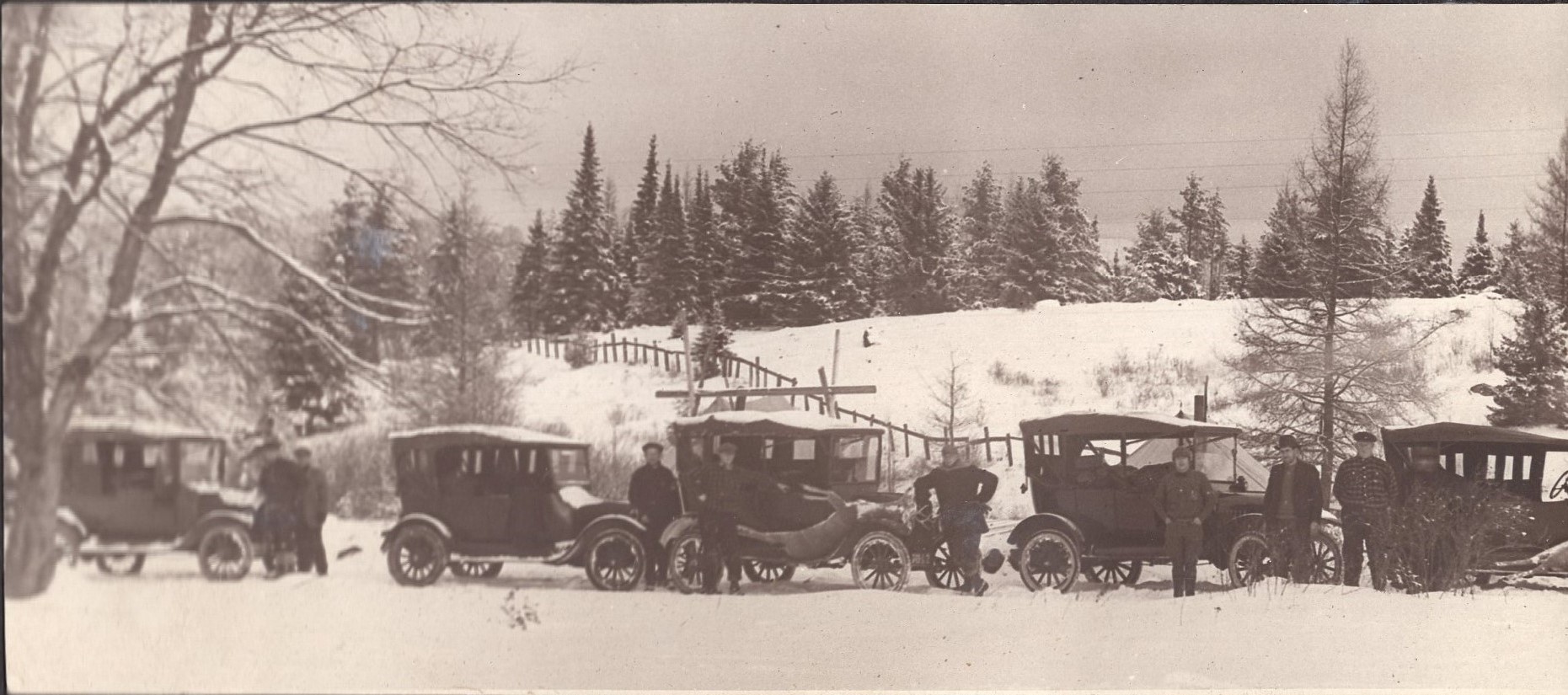
Caption 3: The note on this 1919 scrapbook photo says “Ready to Leave for Home.” Photo courtesy of Chris Coffin.
The group of hunters on their way home in their Model Ts came up from Fort Ann in 1919 and hunted around Kempshall Mountain. They were farmers or guards at Comstock Prison (Great Meadow), different sorts of people than most of the wealthy city folk who had come here to hunt in the previous century. As with every aspect of life in the Adirondacks, those cars made the difference. Hunting was now available to a wider group of people than those who could spend a month or more and hire a guide and his guideboat to get into the backwoods.
The wealthier “sports” still roamed the woods, of course, staying in their rustic camps and hunting on their private land. While the Fort Ann men hunted public and logging company forests, the Brandreths, out at the end of the North Point Road, had had a private preserve on which to hunt since 1851.
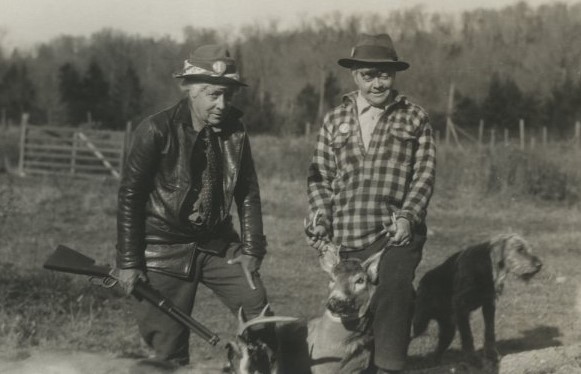
Caption 4: Paulina Brandreth (right) and “D.B.M.” at Brandreth Park about 1920
Paulina Brandreth hunted with the Brandreth guides such as Reuben Cary until her death in 1946. She wrote lucidly and lyrically about hunting under the name of “Paul Brandreth.” Her Trails of Enchantment will be enjoyed by Long Lake hunters even yet, almost a century after its publication.
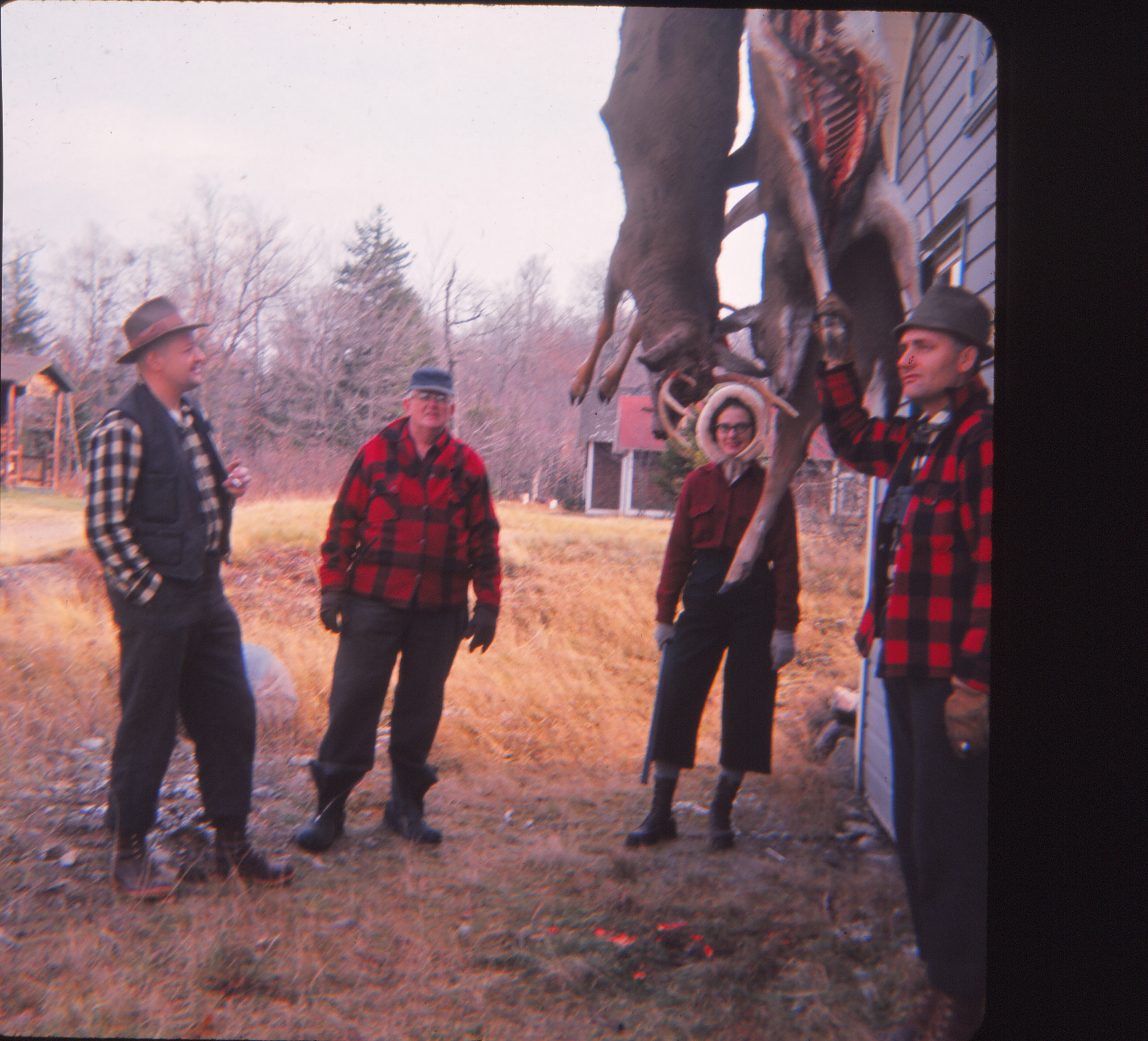
Caption 5: Benjamin B. Brandreth and Wallace “Tim” Emerson, on the left, inspect their deer in the 1960s.
Staying in the Woods
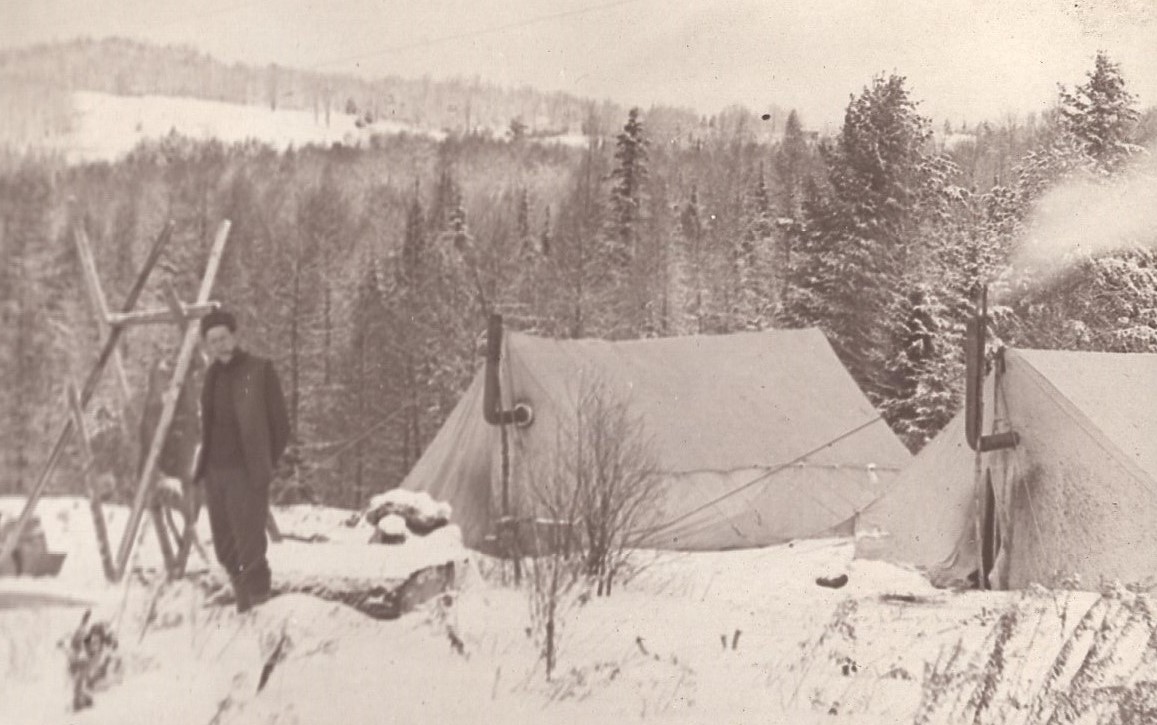
Caption 6: Long Lake hunting camp 1919. Photo courtesy of Chris Coffin.
Paulina could stay in one of the lean-tos or camps Cary built for her out in the woods on the preserve, but the hunters on public or logging company land stayed in more temporary housing. They needed a base, because although they could get up here a lot faster than their grandfathers, it was still a day-long drive—or more—over snowy, narrow roads. They, like many other visiting hunters of the era, came up for a week or two and established a base camp out in the woods. The Fort Ann men hunted out of wall tents, complete with woodstoves, in 1919.
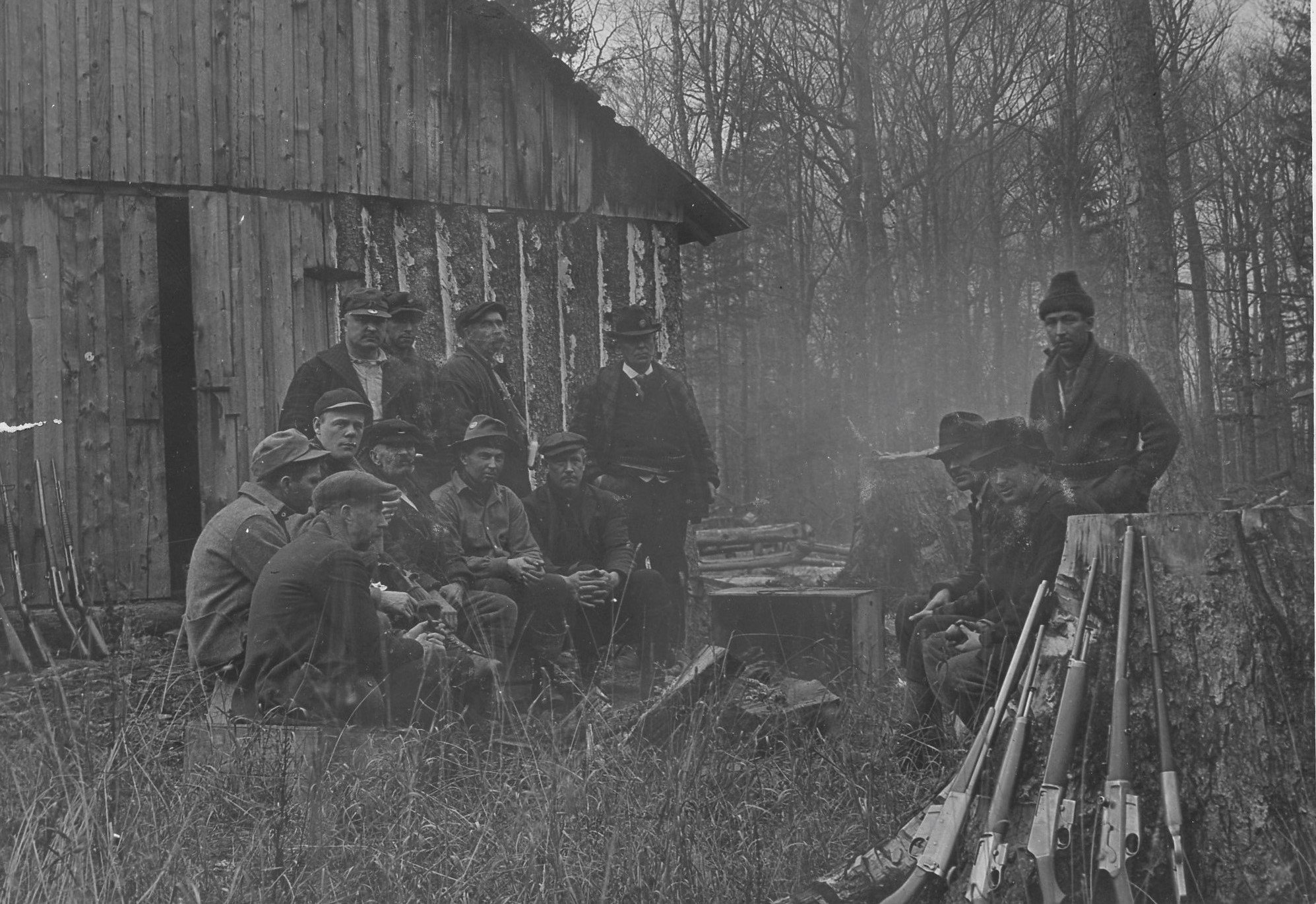
Caption 7: A group of hunters from Fort Ann stayed in the blacksmith shop of a recently abandoned lumber camp at the foot of Kempshall Mountain across Six Mile Brook in 1918. The guides were Steve Lamos and Ed Morrissey. Photo courtesy of Chris Coffin.
Once the loggers finished in an area, they left behind their buildings—rough and temporary, but fine for a week or two of hunting. Until the 1920s, the state took the position that law-abiding citizens could use whatever abandoned structures they found, even on logged land the state had acquired. After the Conservation Commission started managing the Forest Preserve for general recreation in 1920, however, “non-conforming” structures became illegal and the state began to remove them. Today, you need a permit to leave a tent up for more than a few days, and it cannot be left up all year.
The relationship between hunters and logging operations worked well for both parties. Not only did the loggers leave behind structures, but they left behind good deer country. Selective cutting, for hardwood, pine or spruce, leaves a lot of browse in the understory as well as fostering in the clearings growth of more young shrubs and trees favored by deer. The whitetail deer population in the Adirondacks expanded greatly in the early 20th century largely because of all this logging. Pulpwood logging tends to clear an area and initially, at least, reduces the browse and cover for deer.
As servicemen began coming home from the Second World War and heading back to the woods to hunt, logging companies regularized these arrangements. For much of the last fifty years of the century, hunters could lease land owned by paper companies and erect a more-or-less permanent camp to use while the trees grew back. Both parties gained: the hunters got a base to which they could return year after year and woods they could get to know, and the paper companies got help paying their expenses.
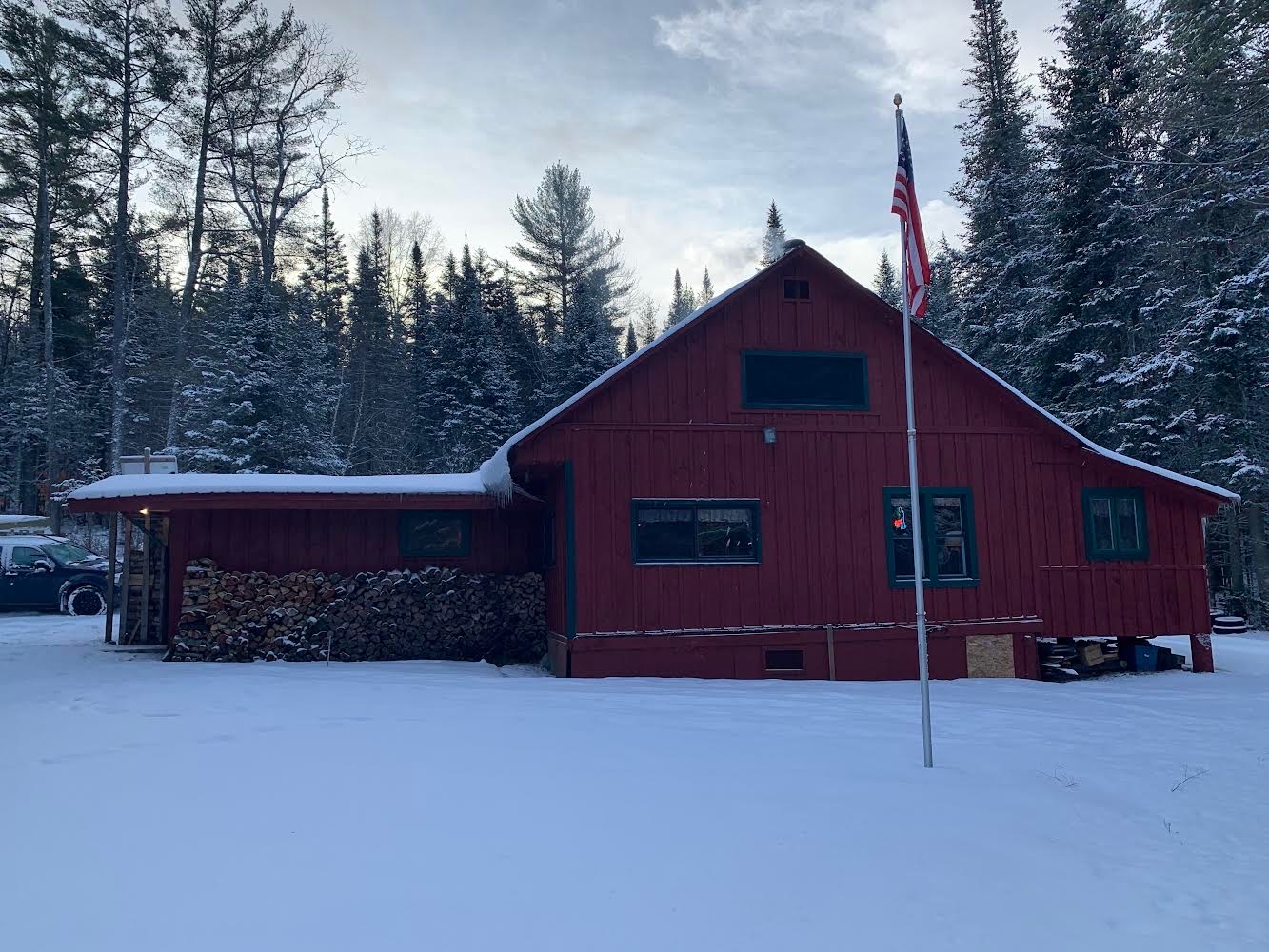
Caption 8: The Hanmer Brook Association was established in 1985 by people with strong ties to Long Lake. Photo courtesy of Andy Snide.
Hunting camps are undergoing change, however. Many logging companies are selling their timberlands and the new owners, often developers, may not want hunting camps on their property. Hunting camps have become treasured institutions, though, and their users are finding new ways of maintaining not only their structures in the woods, but the culture that goes with them—getting together with friends and family, shared experiences, and a place away from the daily routine. Once totally male preserves, hunting camps are becoming more and more places for the whole family, and used all year-round. In this town, with its abundance of state land, groups buy a smallish piece of land adjacent to public land, where they can preserve their friendships and traditions and have access to plenty of forest where—they hope—they can find that big buck.

